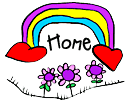|
Our class chose to do a study on pigs. We read many "Three Little Pigs" books. My students really loved the book THE THREE LITTLE WOLVES AND THE BIG BAD PIG. We also read about real pigs in the book PIGS by Gail Gibbons. We learned the finger play "This Little Piggy Went to Market". We wrote a story about a pig, and pigs riddles. We also decided which "Three Little Pigs" book was our favorite. To end our activities we made pigs in a blanket. Darrielle's
pig riddle was: What is a pigs favorite movie?
Some other riddles that
we came up with as a class are: What car does a pig drive? What is a pig's favorite
game? What does the pig go to
the dumpster? Nina's picture of the little pig who went to the market.
Hunter's story about a pig: The Pig and the Blimp
One day a pig wanted to go to France.
So he packed and got in his blimp. When he got to France, he wanted
to see the Eiffel Tower. After that he had a big lunch. Then
he bought a house. Quavon is making his pig in a blanket.
Maggie is making her pig in a blanket.
Qua and Cyndel are enjoying eating their pigs in a blanket.
Webliography South Carolina Curriculum Standards I. Reading and Literature F. The
student will read and comprehend a variety of fiction and nonfiction
selections. II. Listening A. The
student will continue to expand and use listening vocabularies. III. Speaking A. The
student will adapt or change oral language to fit the situation. IV. Writing A.
The student will write to communicate ideas. V. Research B. The student will access and use information from observations, conversations, technology, and books to create oral and written stories and reports. |

